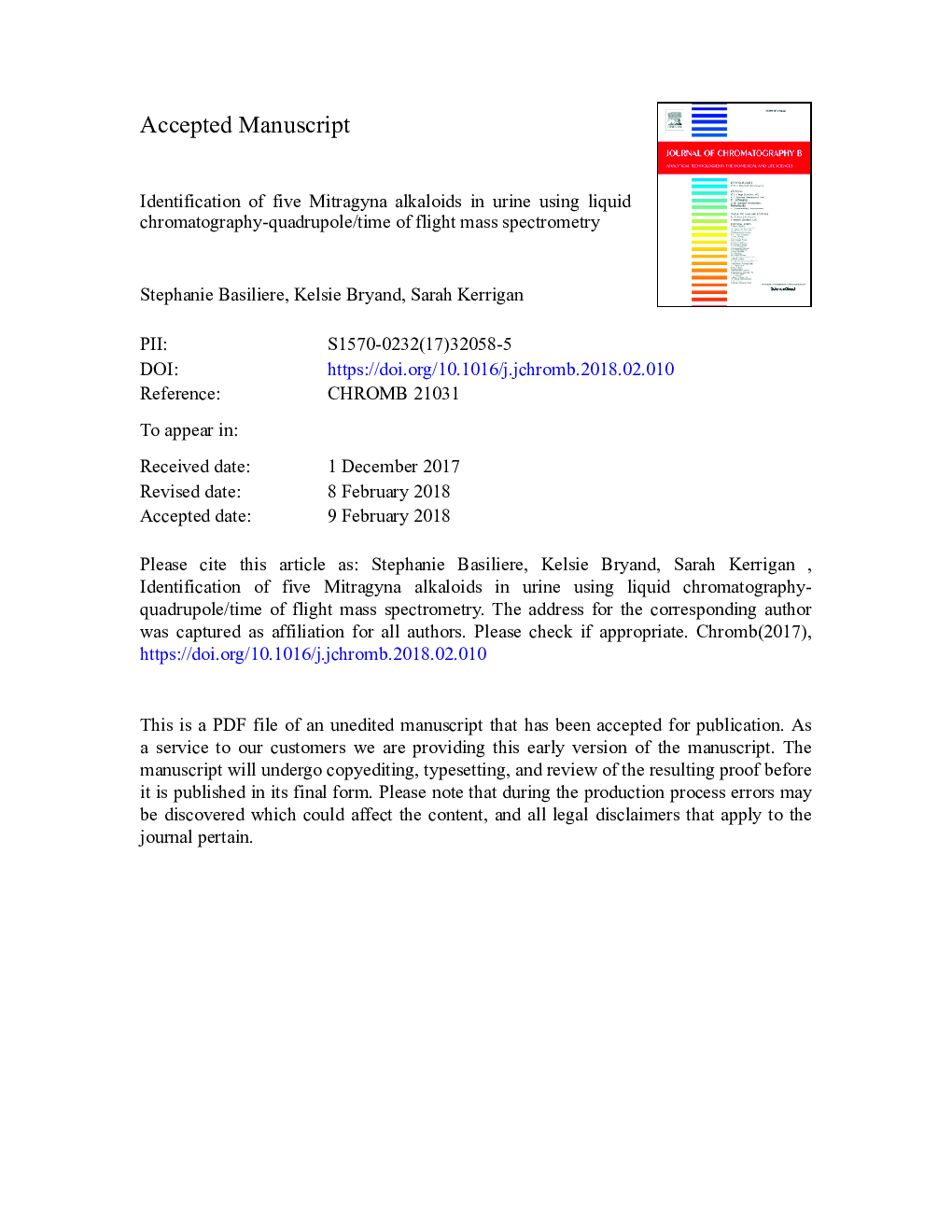| Article ID | Journal | Published Year | Pages | File Type |
|---|---|---|---|---|
| 7615265 | Journal of Chromatography B | 2018 | 36 Pages |
Abstract
Mitragyna speciosa (Kratom) is a psychoactive plant that has recently emerged as a recreational drug. Mitragyna alkaloids are not within the scope of traditional forensic toxicology screening methods, which may contribute to under-reporting. Solid phase extraction (SPE) and liquid chromatography-quadrupole/time of flight mass spectrometry (LC-Q/TOF-MS) were used to identify five alkaloids in urine. Target analytes included the two known psychoactive compounds, mitragynine and 7-hydroxymitragynine, in addition to speciociliatine, speciogynine, and paynantheine. Two deuterated internal standards (mitragynine-D3 and 7-hydroxymitragynine-D3) were employed. Using traditional reversed phase chromatography all compounds and isomers were separated in 10â¯min. The procedure was validated in accordance with the Scientific Working Group for Forensic Toxicology (SWGTOX) Standard Practices for Method Validation. Extraction efficiencies were 63-96% and limits of quantitation were 0.5-1â¯ng/mL. Precision, bias and matrix effects were all within acceptable thresholds, with the exception of 7-hydroxymitragynine, which is notably unstable and unsuitable for quantitative analysis. In this paper we present a simultaneous quantitative analytical method for mitragynine, speciociliatine, speciogynine and paynantheine, and a qualitative assay for 7-hydroxymitragynine in urine using high resolution mass spectrometry (HRMS).
Keywords
Related Topics
Physical Sciences and Engineering
Chemistry
Analytical Chemistry
Authors
Stephanie Basiliere, Kelsie Bryand, Sarah Kerrigan,
